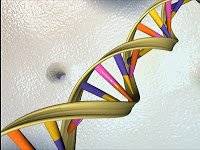First Publication Date: 19th December 2010
Since its inception, patent law has been customized and fine-tuned by governments to meet the needs of evolving technologies. Strong basic principles have evolved to cater to the needs of traditional fields of science and technology, and they have been working well in promoting progress. However, these basic principles have utterly failed in a number of ways when applied to Modern Biotechnology. The unique nature of Modern Biotechnology is the main reason for this failure.
Why is Biotechnology Unique?
Biotechnology promises more efficacious drugs, medical treatments tailored to an individual patient’s biological makeup, new crops, new industrial processes, and much more. As pointed out by Geoffrey Carr, it has the potential to transform humanity—provided humanity wishes to be transformed. Biotechnology companies invest hundreds of millions of dollars, and sometimes decades, to develop a product. Patents provide the needed assurance for investors to risk the capital necessary for the long development process, allowing investment to not only be recouped but also generate a profit. In the absence of an effective patent regime, investors would be hesitant to invest millions in long-term R&D because research outputs could be exploited by any person, jeopardizing their returns and profits.
In this context, biotechnology assumes very high importance when viewed in light of the patent regime because of its research and investment-intensive nature. The patent system plays a critical role in encouraging the progress of biotechnology. However, the application of the patent system to biotechnology is fraught with uncertainty and ambiguity due to its unique nature.
One of the most distinctive features of biotechnology is its diversity. Biotechnology is divided into several subfields. Although a common line runs through all of them, each subfield has characteristics and features that are differentiable from the others, making it difficult to frame a broad set of general rules for biotechnology as a whole. For example, genomics differs from tissue culture in characteristics, applications, processes, and products. Even within tissue culture, plant tissue culture has different characteristics compared to animal tissue culture. Because of its diversity and the varying characteristics of its subfields, it is difficult to frame common patent principles or rules for biotechnology as a whole. This complexity makes the application of patent law to biotechnology highly challenging.
As biotechnology deals with life, it raises moral, ethical, and religious issues. Many aspects of biotechnology, from the patenting of genes or genetically modified crops to the patenting of life, are confronted with moral, ethical, and religious controversies. Public consciousness has long been intertwined with the progress of biotechnology, and policymakers have struggled to create a patent regime that promotes a field believed to have the potential to disturb ethics and values embedded in society.
Moreover, there is public fear that biotech research might result in environmental hazards, further fueling controversies. One notable issue that raised moral, ethical, and environmental concerns was the rDNA controversy, which led to the promulgation of safety guidelines for biotech research.
Another unique challenge in applying the patent regime to biotechnology is the ambiguity surrounding the term “biotechnology” itself. The meaning of the term has long been vague and context-dependent. The World Intellectual Property Organization (WIPO) defines biotechnology as “any technology using living entities, in particular animals, plants, or microorganisms, or causing change in them.” The United States Office of Technology Assessment defines biotechnology as “any technique that uses living organisms or substances from those organisms to make or modify a product, to improve plants or animals, or to develop microorganisms for specific uses.” The OECD defines biotechnology as “the application of science and technology to living organisms, as well as parts, products, and models thereof, to alter living or non-living materials for the production of knowledge, goods, and services.”
All three definitions have different meanings and scopes. The WIPO definition is broad, covering any technology that uses living organisms. In contrast, the definition from the U.S. Office of Technology is narrower, limited to techniques that use living organisms to make or modify products and improve plants or animals. The OECD definition has a different scope, focusing on the use of living organisms for the production of knowledge, goods, or services, which is a more commercial view of the field. The varying definitions across countries and contexts create confusion and uncertainty in understanding the term for patent application purposes.
The unique nature of biotechnology makes it challenging to apply traditional patent principles to the field. Considering the uniqueness of the field, differential patent principles have been evolved and applied to biotechnology.
Image from Wikimedia Commons




0 Comments
Preethi Parthiban
Good Post.
Thanks Kalyan.